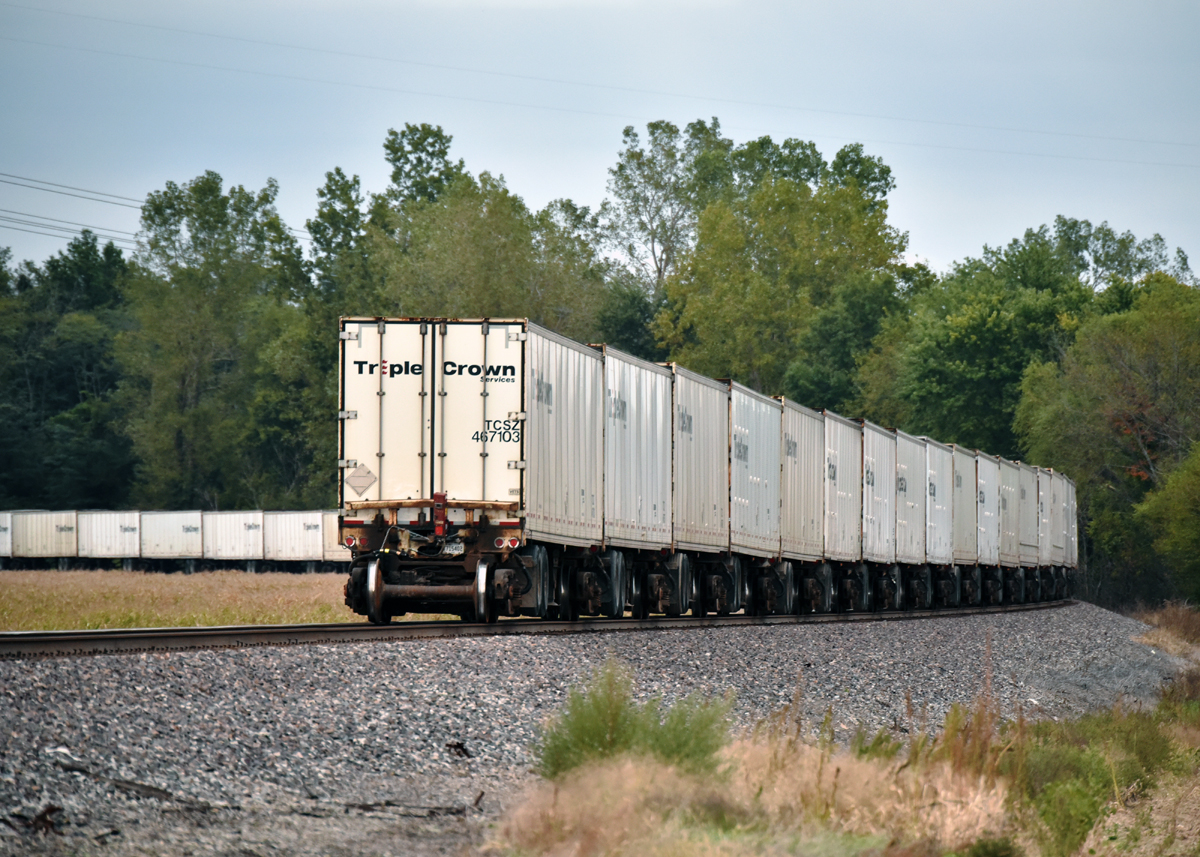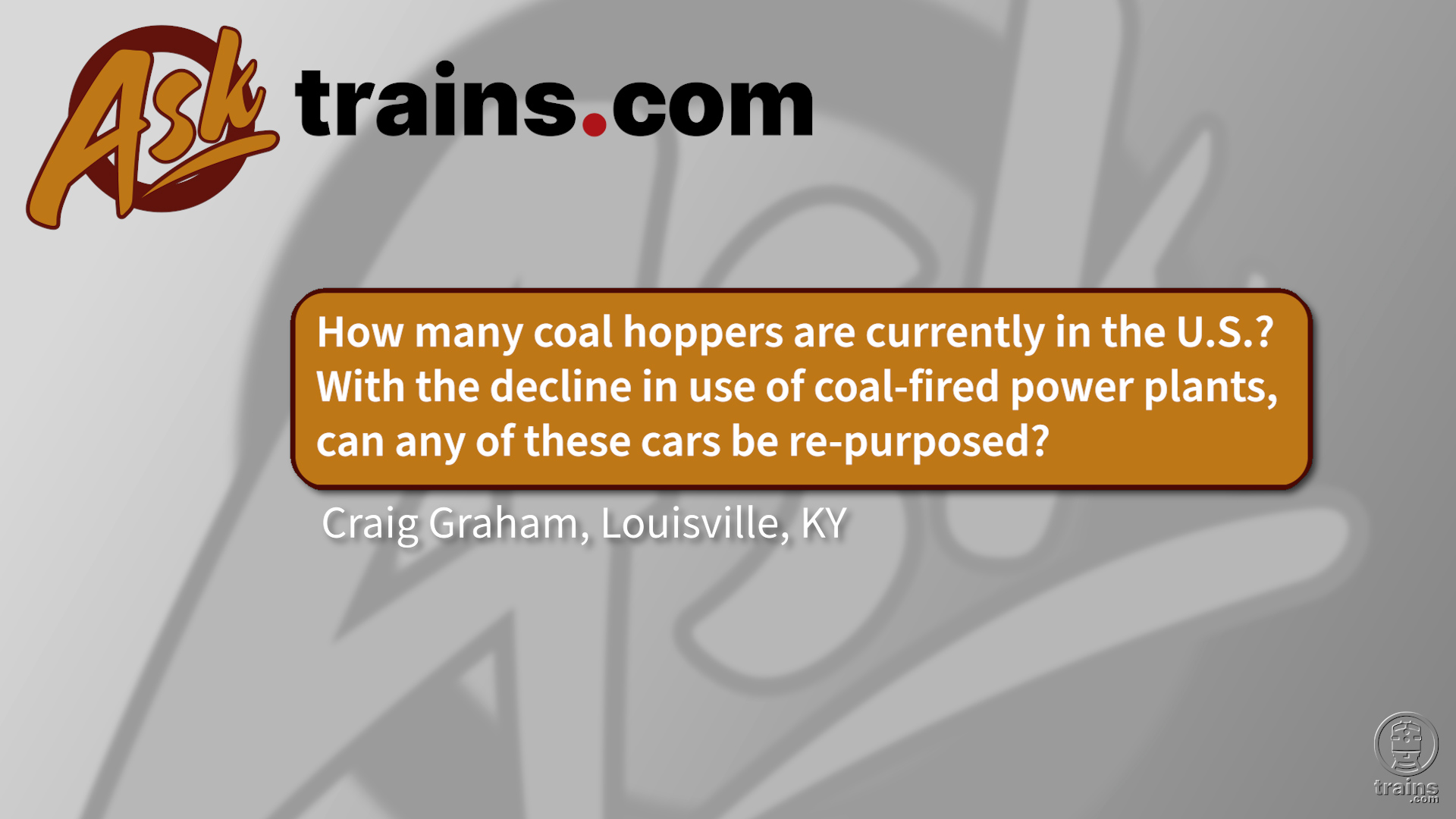Answer: The trailers (“vans” might be the better term) have stronger frames, capable of withstanding 400,000-pounds draft and buff in-train forces. They have structural elements where the nose coupler attaches at the front of the van, and where the bolster adapter to the rail bogie attaches at the rear of the van. This makes the Roadrailer dry van approximately 800 to 1,000-pounds heavier than a conventional intermodal dry van of the same size. Additionally, the rail bogie (a premium swing-motion type truck), adapter, and brake valve and rigging account for another roughly 11,000 pounds per van, but that weight is not carried over the highway.
Per Federal Railroad Administration regulation, Triple Crown trains can operate in lengths of up to 150 units, and NS trains 255 and 256 [Detroit to Kansas City, Mo. trains] frequently operate close to or at this limit, topping out around 8,300-feet. Train 255 typically runs a little over 4,000 tons, and 256 runs around 3,000 tons. Both typically operate with a single six-axle unit. By comparison, a double-stack train randomly picked given a similar length, had 199 containers, weighed 7,133 tons and had three six-axle units. It’s difficult to find a comparable-length solid trailer-on-flat-car train these days, at least on NS.
Operational advantages, in addition to much lighter tare weight, include being nearly slackless and extremely aerodynamic owing to the close spacing between vans. That also makes them inherently theft-resistant, since the trailer doors can’t be opened at a 12-inch spacing. — Walter Rosenberger, Manager — operations research and tests, Norfolk Southern













